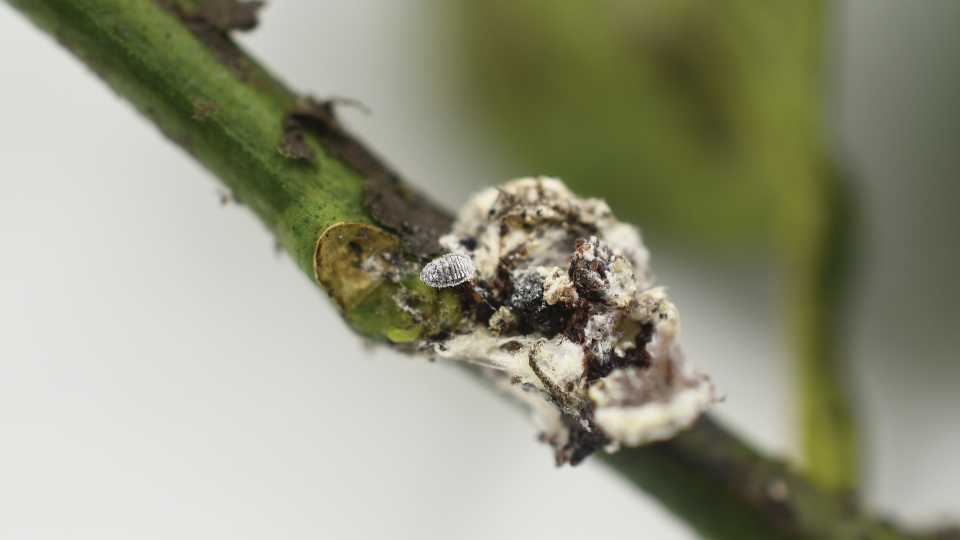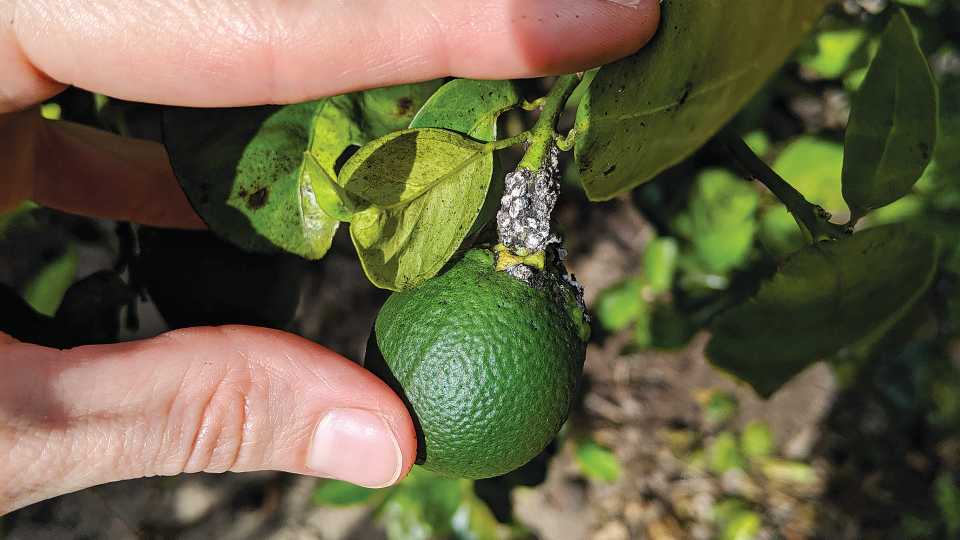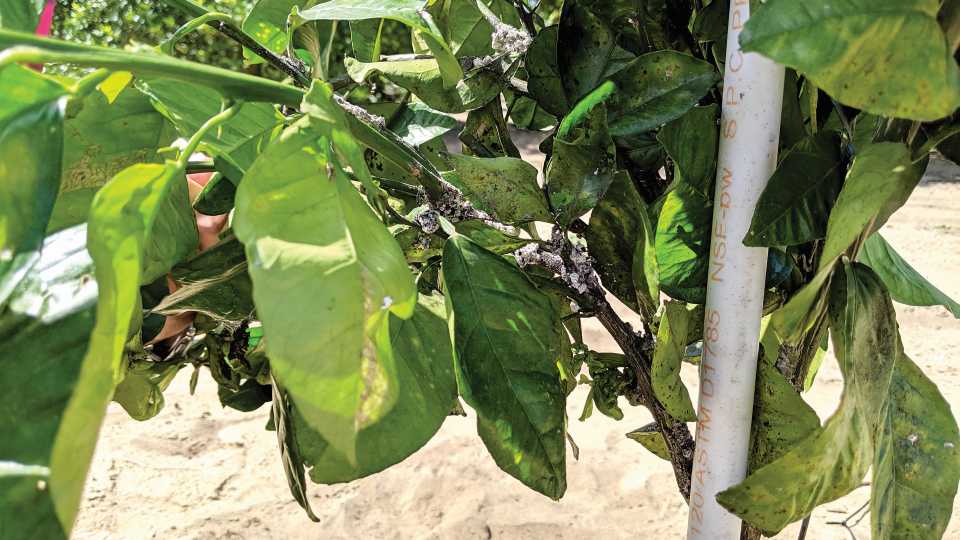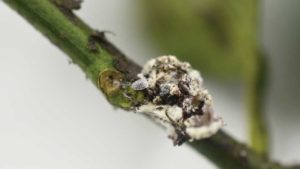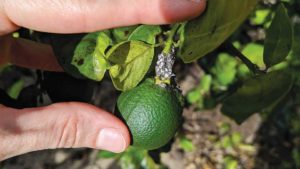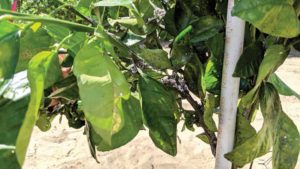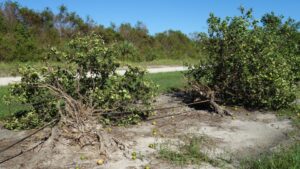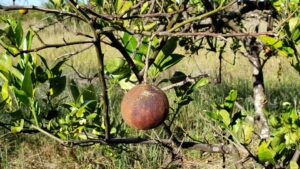What You Need to Know About the Lebbeck Mealybug
There’s a new pest in town for Florida growers called the Lebbeck mealybug (Nipaecoccus viridis). It has caught the eye of researchers from UF/IFAS because it is known as a serious pest in citrus in other parts of the world. It is widespread in parts of the Middle East and Africa. It has been documented to cause up to 70% fruit drop in heavily infested groves. Damaged fruit will not be marketable for fresh market. The impact of damage on the quality of juice is yet to be determined.
In Florida, the Lebbeck mealybug has been documented in commercial groves in Highlands, Hendry, DeSoto, and Hardee counties.
During the 2019 Citrus Expo, Lauren Diepenbrock, an Assistant Professor of entomology with UF/IFAS, gave a rundown of what is known about the Lebbeck mealybug in Florida groves. She said there is still a lot to learn about the pest and not much new research to reference, but she and her colleagues are hard at work.
Favorable Climate
Florida’s subtropical environment sets up well for the pest. It thrives in high humidity and temperatures. In addition, it can subsist on many hosts other than citrus, including fruits, vegetables, field crops, and ornamentals.
Diepenbrock noted the Lebbeck mealybug reproduces sexually and asexually (like aphids). With continuous reproduction and quick development, overlapping of multiple generations can be expected. A generation takes about 20 days to complete.
What to Look For
The evidence of Lebbeck mealybug’s presence can be pretty obvious in the form of the white, waxy and gooey-type substance it deposits to protect eggs. The pest likes to locate at branch junctions, underneath calyx buttons/sepals, and the blossom end of fruit.
When scouting, examine the tree from top to bottom, as the mealybug doesn’t have a preference where it locates in the tree.
“They are pretty mobile and can be easily moved by equipment, humans, and other animals,” Diepenbrock said. “They can be wind-blown, and ants even farm them to harvest their honeydew. They may even be capable of walking between hosts.”
They are not that difficult to scout for after a little practice. “Once you see them, you can’t un-see them,” she added.
Sanitation Is Key
It is important to sanitize all tools and equipment that come in contact with infested plants. Pressure wash large equipment to knock off nymphs. When moving between groves, change clothes and wipe down exposed skin surfaces.
“If possible, plan your grove visits so that known infested groves are the last visit of the day,” Diepenbrock said.
Beneficial Insects and Chemical Controls
Some research studies have found that beneficial insects can be more effective than insecticides in managing the Lebbeck mealybug. Lady beetles are particularly effective against the pest. Predatory caterpillars and flies feed on the bugs, as well as earwigs.
There is not a lot known about chemical controls of the pest, especially with new compounds. Chlorpyrifos and acetamiprid have shown good efficacy on outbreaks of the pest. New chemistries that would have less impact on non-target insects are currently being evaluated.
“The challenge has been getting the chemical through the ovisac (the waxy, gooey layer deposited by the mealybug),” Diepenbrock said. “A two-pronged approached should be considered, using a systemic material to kill reproductive females and a contact spray when crawlers are out.”
She added that chemical coverage is key. Applicators should increase gallonage and use oils, or surfactants. And, slow the sprayer down — 1.5 mph speed will ensure better coverage than 3 mph.





